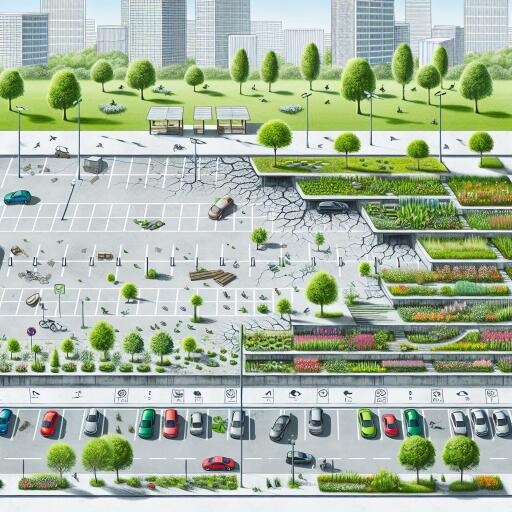
Turning Parking Spaces into Paradise: A Comprehensive Guide to Crafting Urban Gardens
Repurposing underused areas, such as parking lots, into lush gardens reaps benefits far beyond mere aesthetics. It’s an endeavor that breathes life into urban spaces, catering to biodiversity, reducing urban heat, and enhancing air quality. The journey from asphalt to ecosystems, however, requires thoughtful planning and community engagement.
The first step in this green transformation involves a thorough analysis of the space at hand. This means scrutinizing the layout, assessing drainage capabilities, and considering the interplay with surrounding structures. With these insights, one can choreograph a design that not only supports a diverse plant life but also maintains its utility and accessibility.
Drafting a detailed garden blueprint is pivotal. This plan must balance your verdant aspirations with the realities of sunlight patterns, soil condition, and water access. Strategizing the arrangement of plants, pathways, and communal spaces enables the efficient and aesthetically pleasing use of every square inch.
Choosing native vegetation enhances the garden’s sustainability by reducing the need for irrigation and maintenance. Moreover, integrating permeable paving solutions can significantly cut down on water runoff, aiding in flood prevention and groundwater replenishment.
Embracing eco-friendly garden strategies, such as composting, rainwater harvesting, and the use of natural fertilizers, enriches the garden without harming the environment. Such practices ensure the vitality of your urban oasis, making it a haven for local wildlife and a model of sustainability.
To truly root the garden in the fabric of the community, engage local residents and stakeholders through workshops, volunteer initiatives, and communal events. This not only cultivates a sense of belonging and ownership but also weaves the garden into the community’s daily life.
Developing a garden requires foresight, including a detailed maintenance agenda that addresses watering, weeding, and pest management. This could involve forming a dedicated volunteer group or enlisting professional gardeners to keep the space flourishing.
Enhance the garden’s allure and functionality with thoughtful additions like benches, well-lit paths, and art installations. Spaces designed for rest, interaction, and enjoyment elevate the garden from a simple green space to a cherished community landmark.
Equipping the garden with educational signage and offering programs on biodiversity and conservation can enlighten visitors about the environmental significance of their new green space. Such initiatives spark broader conversations about sustainability and inspire communal environmental stewardship.
Track your garden’s evolution by measuring plant health, wildlife activity, water conservation efforts, and community involvement. This data offers valuable feedback on your garden’s impact, informing future enhancements and providing evidence of your project’s success.
Celebrate your garden’s milestones with the community through special events or recognitions. Publicizing these achievements not only fosters a sense of communal pride but also motivates others to embark on similar green initiatives.
The transformation of a parking lot into a garden is an enriching venture with widespread environmental and social benefits. By prioritizing sustainable practices, fostering community involvement, and nurturing a collective sense of responsibility, such a project can become a cornerstone of urban ecological balance and a beacon of community spirit.





Leave a Reply